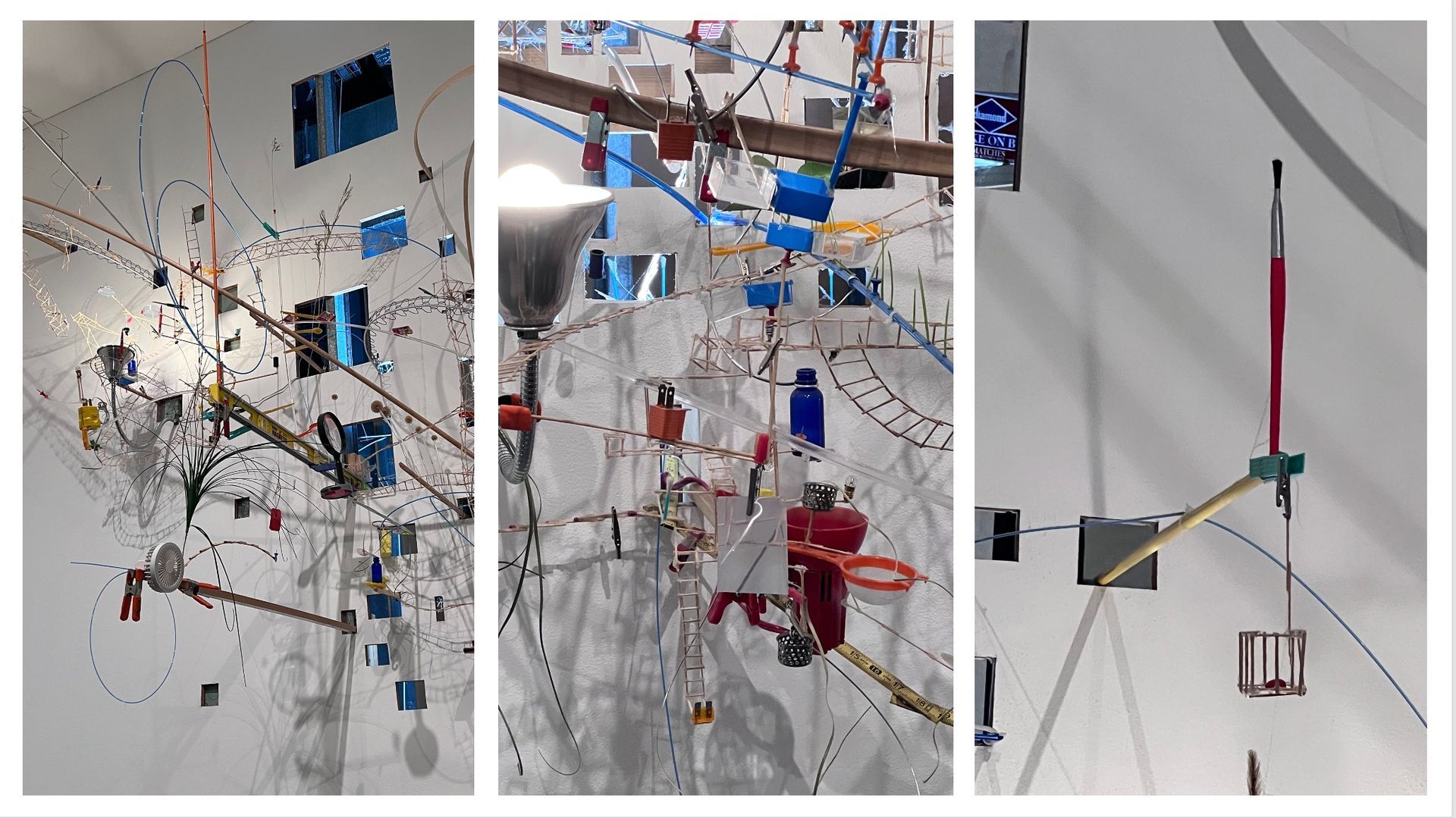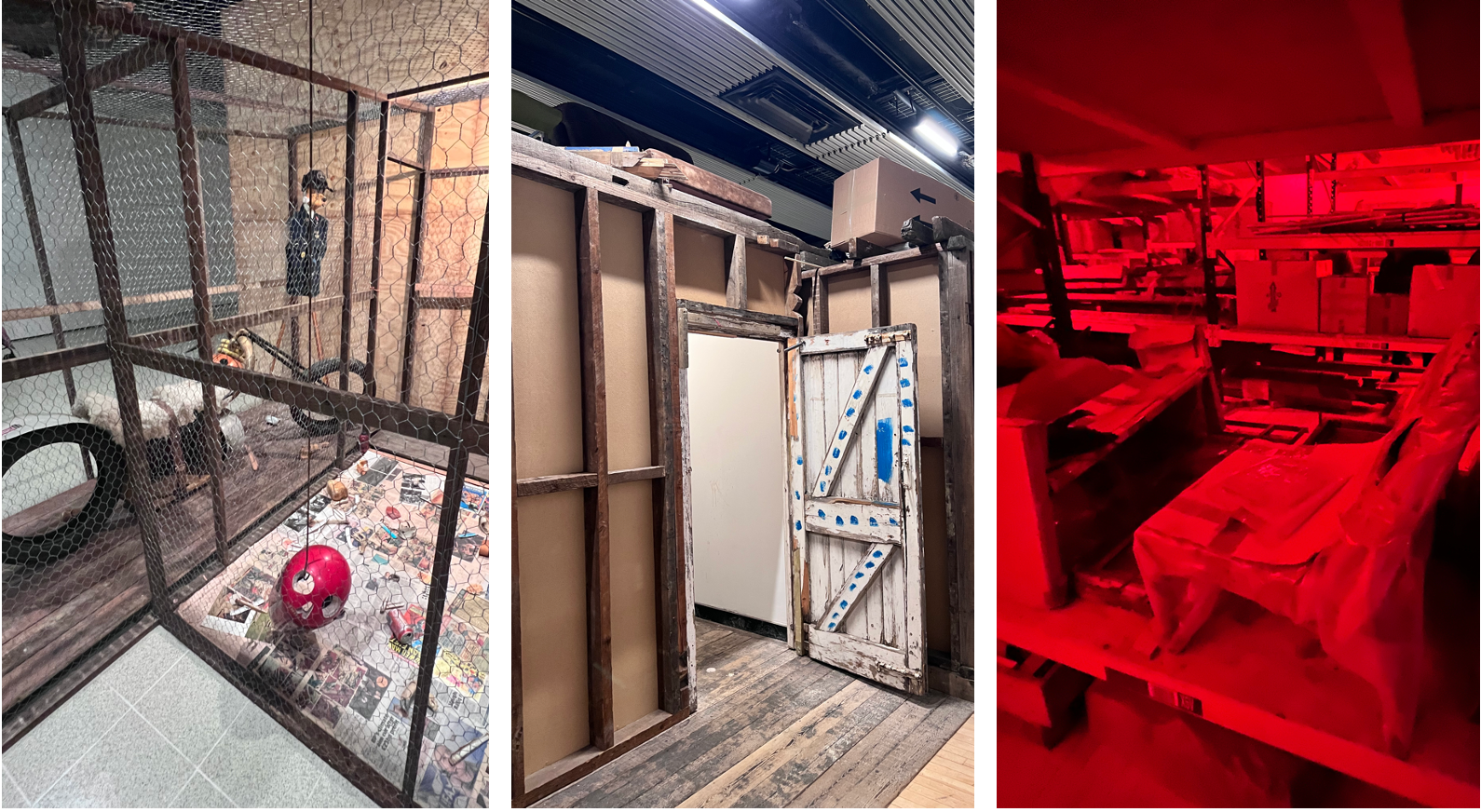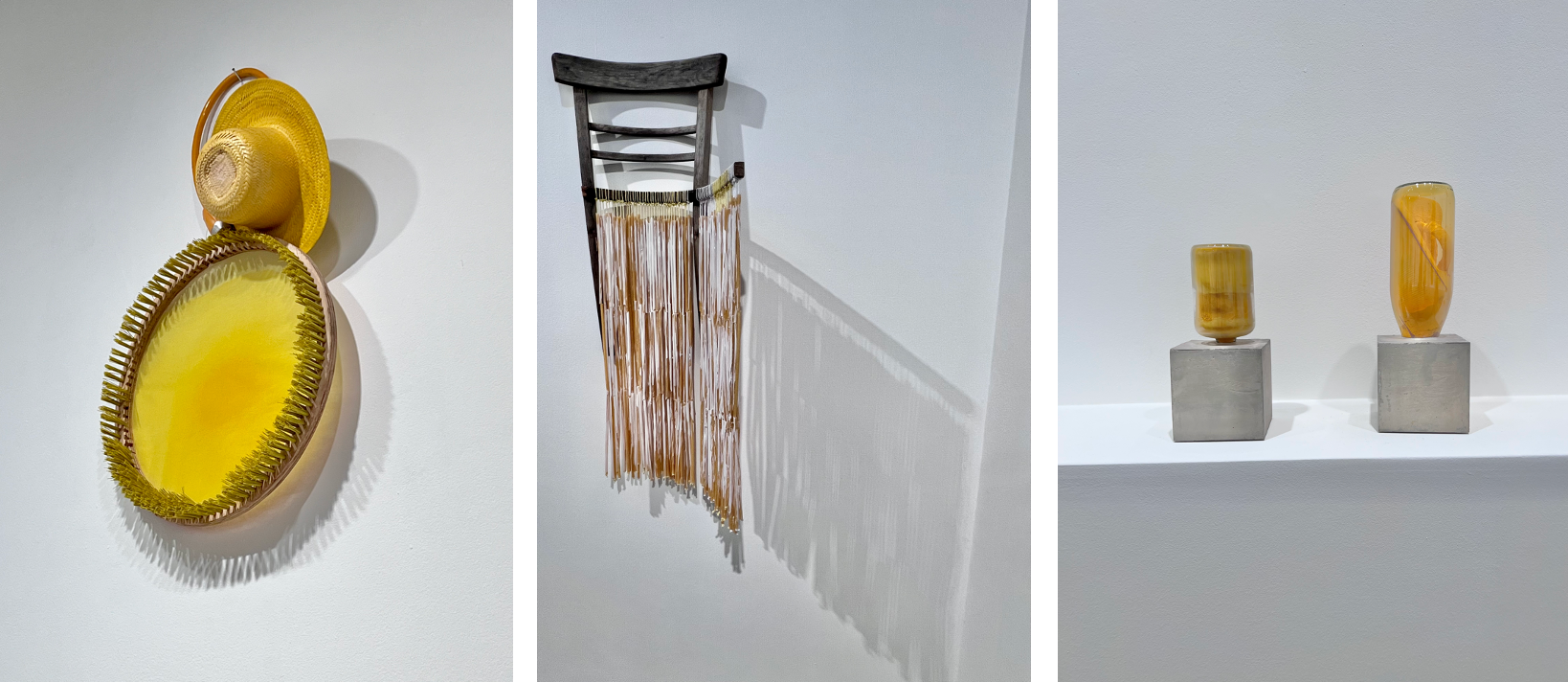Permanent Exhibition at Tate Modern

Sarah Sze, Seamless, 1999
Sarah Sze, born in 1969, draws inspiration from the modernist traditions of found objects to craft immersive installations that pulsate with fluidity, metamorphosis, and delicacy. Her creations raise inquiries about our society's valuation of objects and how these objects confer significance upon the spaces and moments we inhabit.
I find myself captivated by the objects that serve as portraits of the zeitgeist, embodying the behaviours and attitudes of the time in which the artwork is produced. It feels almost like an ecosystem, where the materials possess an active, organic quality. Similar to Sarah Sze's work, my own artistic aspirations lie in transcending the mere materiality of objects.
Sarah Sze employs inexpensive, everyday items in her installations, highlighting their connection to consumer culture. In doing so, she follows in the footsteps of earlier 20th-century art movements such as constructivism and abstract art, which sought to reflect the industrialised world.
At Tate Modern, Sarah Sze's installation encompasses objects that give birth to captivating universes. Inspired by her approach, I aim to create my own installation that represents the past, present, and future, utilising objects associated with my own personal journey, encased within boxes and cubes.
One aspect of Sarah Sze's work that particularly intrigues me is how her sculptures breach the confines of the "white cube" gallery space. In my installations, I intend to transcend the boundaries of the physical cube as well, incorporating elements of surveillance video to break through these walls.
Furthermore, Sarah Sze's utilisation of colours like red, blue, and yellow evokes memories of modernist art. These hues resonate with me on a personal level, having grown up in a communist regime surrounded by constructivist and social realism artworks that left an indelible mark on my artistic development.
Temporary Exhibition at Hayward Gallery

Extinction Beckons, 2023, Mark Nelson’s exhibition at Hayward Gallery
Mike Nelson's sculpture exhibition at Hayward Gallery offers a captivating journey into forgotten spaces and invites viewers to contemplate the fragility of memory and the fleeting nature of human existence. The meticulous attention to detail and the ability to evoke emotional responses are admirable aspects of this exhibition.
Nelson's exhibition, titled Extinction Beckons, presents a series of immersive installations that meticulously reconstruct forgotten or neglected spaces, transporting the audience into evocative realms. The artist's attention to detail is remarkable, as he recreates dilapidated rooms, abandoned factories, and forgotten historical sites. Through careful manipulation of scale, lighting, and the clever use of found objects, Nelson creates a sense of authenticity that blurs the line between reality and artifice.
One notable strength of Nelson's work lies in his ability to evoke nostalgia and elicit emotional responses from viewers (I, Impostor, 2011, Various materials). The carefully curated artifacts within each installation evoke personal memories and trigger reflections on the passage of time. The exhibition successfully taps into our collective consciousness, compelling us to question the significance of forgotten spaces and the stories they hold (The Deliverance and The Patience, 2001, Various materials).
However, despite its aesthetic allure, some installations within the exhibition lack the same level of impact and engagement as others (The Asset Strippers, 2019, Various materials). While certain spaces captivate with their intricate details and immersive qualities, others feel less compelling, resulting in a slightly uneven experience for visitors. Greater consistency in terms of conceptual rigour and execution across the entire exhibition would have strengthened its overall impact.
Overall, Nelson's exhibition succeeds in challenging traditional notions of sculpture, provoking thought, and inviting viewers to reimagine the past through a contemporary lens.
Temporary Exhibition at Thomas Dane Gallery

Broken, 2023, Alexandre da Cunha at Thomas Dane Gallery (currently on show), London
Alexandre de Cunha's current exhibition at the Thomas Dane gallery in London is a thought-provoking and visually remarkable display of the artist's ability to transform everyday objects into art.
Born in Rio de Janeiro in 1969, he presents a collection of new sculptures and works on paper. Titled Broken, this exhibit illustrates his profound engagement with found objects and spatial interventions. Through his manipulation of materials and the incorporation of everyday items, da Cunha challenges conventional notions of value, function, and form. The juxtaposition of solidity and fragility, permanence and entrapment, permeates his sculptural works. Accompanied by gouache compositions and wall-based objects, the exhibition invites viewers to explore the intersection between objects and images while delving into the narratives embedded within the artist's assemblages. By embracing the concepts of redundancy, fragmentation, and disrepair as generative forces, da Cunha encourages us to reconsider the transformative potential of the broken.
At the heart of da Cunha's artistic practice lies a keen sensitivity to his immediate surroundings. He frequently engages with everyday objects and utilitarian materials, challenging conventional notions of value, function, and form. Splitting his time between Brazil and the UK, two countries that have experienced periods of political and social turbulence, da Cunha's recent studio work reflects a broader sense of flux. Objects and materials are transformed and assembled into piebald compositions that evoke a state of suspension, capturing a sense of limbo. Recognisable objects such as chairs, hats, bottles, and feathers are presented in broken and fragmented states, suggesting processes of reconfiguration and reframing. Through acts of breaking, both as fracture and discontinuation, da Cunha transforms the familiar, offering new perspectives and possibilities. The intimate scale of many of the works contributes to this transitory sensibility, contrasting with his previous large-scale concrete sculptures.
Within the gallery, the sculptural works are strategically positioned at eye level on the walls and on ledges running along the perimeter. By intentionally avoiding displaying the sculptures in the round, da Cunha compels viewers to engage with frontal views, heightening their pictorial nature. Concrete, a material integral to da Cunha's artistic vocabulary, is frequently employed in the shelf-based works. Its significance stems from the artist's reflections on construction, architecture, and modernism, as well as its prevalence in his native Brazil.
Many of the sculptures feature concrete bases that provide stability and weight to objects that would otherwise be unstable. This juxtaposition highlights a contrast between the perceived permanence of the bases and the fragility of the objects they support. Bottles, reminiscent of scientific specimens, contain soft or organic materials trapped in concrete, creating a temporal freeze within their hourglass-like structures. Discarded items like brushes, fragments of furniture, or clothing undergo a transformation, acquiring eternal permanence through their unbreakable foundations. This interplay between solidity and entrapment reflects a dark sense of humour as these objects are denied their natural cycles of decay and disappearance.